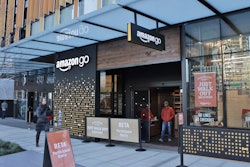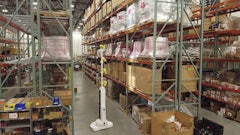
Online shopping, new digital technologies and increasing channel fragmentation are intensifying the pressures on US consumer packaged goods (CPG) supply chains.
In a report by The Boston Consulting Group, How CPG Supply Chains Are Preparing for Seismic Change, highlights the top trends affecting CPG supply chains and the effect on CPG companies’ performance. Issues addressed in the report are: e-commerce sales growth, service-level performance, channel proliferation, network design and cash management trends. The report is based on the 2017 Supply Chain Benchmarking Study, a study of the US units of more than 30 leading CPG companies conducted jointly by BCG and GMA.
“It’s been a turbulent couple of years for the grocery industry, with major disruption and dislocation in the retail landscape,” Daniel Triot, senior director of the Trading Partner Alliance of GMA and the Food Marketing Institute said. “Despite the important performance gains in the supply chain in the past two years, CPG companies cannot be complacent. This report aims to provide guidance for CPG companies looking to harness new digital technologies and trends to support continued growth.”
Keeping Up with E-Commerce Sales Growth
Over the next two years, half the growth in North American grocery sales will come from e-commerce, but only 6 percent of CPG companies have a dedicated e-commerce supply chain team, and only 3 percent are able to fully track sales by channel. As US consumers increasingly come to rely on the digital marketplace for their product needs, the lack of readiness could cause companies to fall far behind in securing their share of customer wallet.
Channel Proliferation Squeezes Service Levels
According to the report, channel proliferation is the greatest impediment to on-time delivery performance. For example, median on-time delivery rates (requested arrival date, or RAD) to online retailers was just 64 percent.
Among the report’s other key findings:
- CPGs companies carry the weight. CPG companies bear 60 percent of logistics costs and hold roughly 50 percent of the inventory. That burden may well increase.
- An ambient/cold-chain performance gap has emerged. Performance diverged significantly between ambient product makers and cold-chain manufacturers. Eighty percent of ambient companies enjoyed performance gains, while 60 percent of cold-chain companies experienced cost increases.
- Service generally improved. For the first time since 2010, CPG supply chains have improved their service levels—but not without incurring greater cost.
- The higher cost of delay. Retailers’ on-time requirements are becoming more stringent. Over the past two years, 76 percent of respondents noted that their companies’ on-time requirements have grown.
- Network design is an overwhelming priority. Service-level pressures are prompting more frequent network redesign. Eighty percent of respondents ranked network redesign a top priority, up from 72% in the previous GMA/BCG study.
In the near future, CPG companies will face rising customer demands, further repercussions from channel proliferation, looming transportation constraints and the need for more frequent network redesign.



















